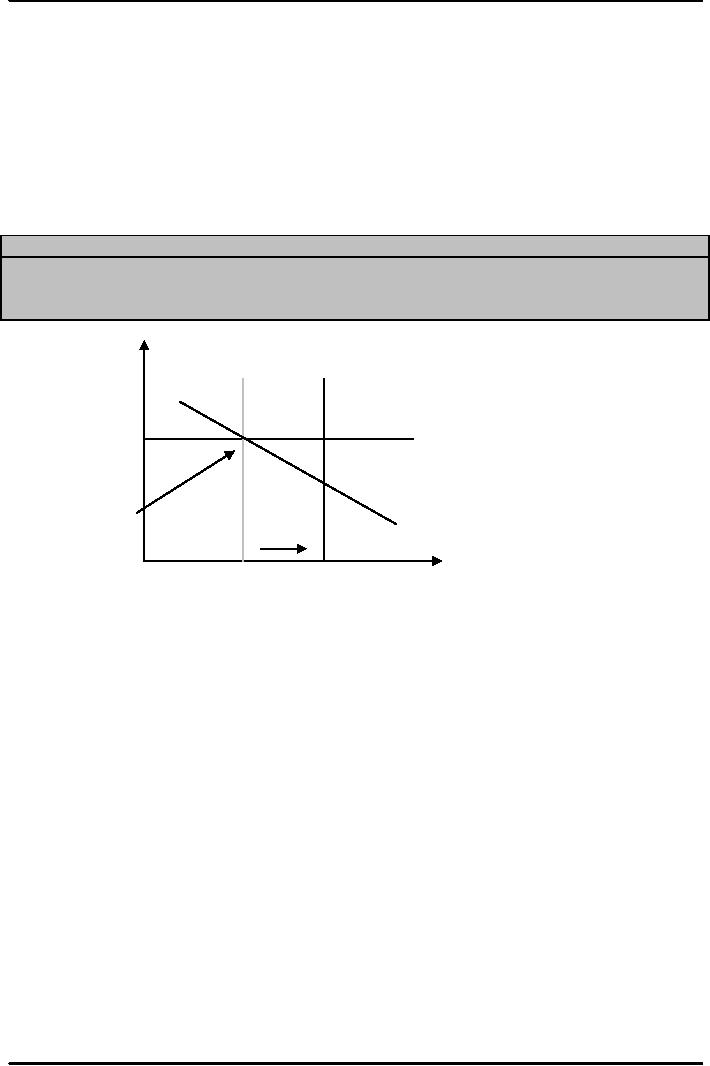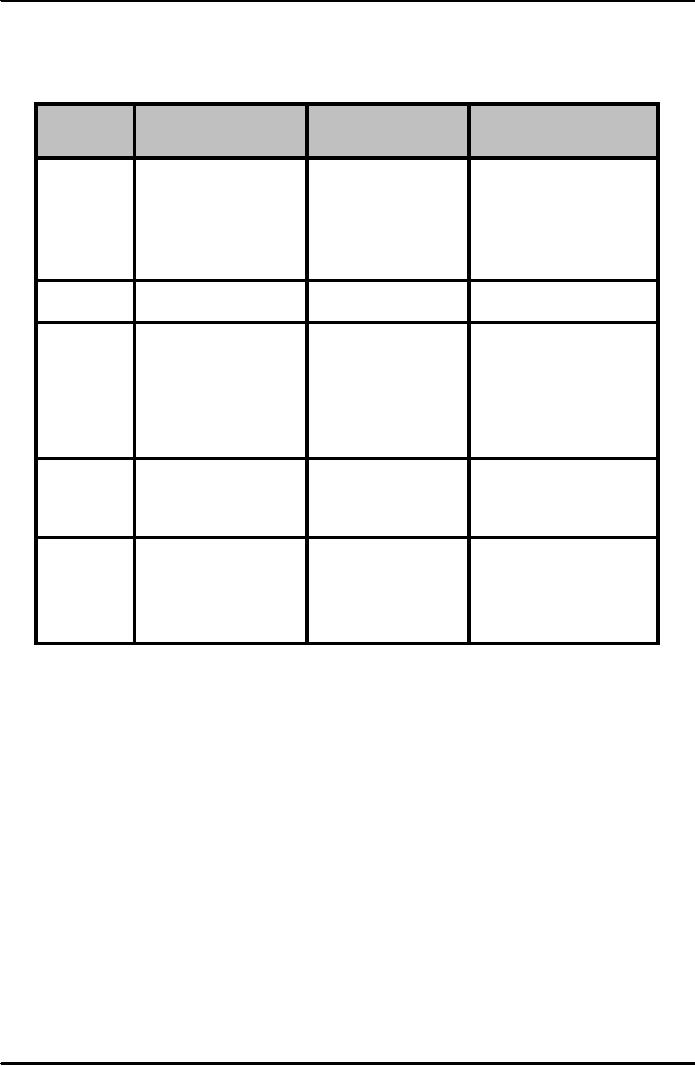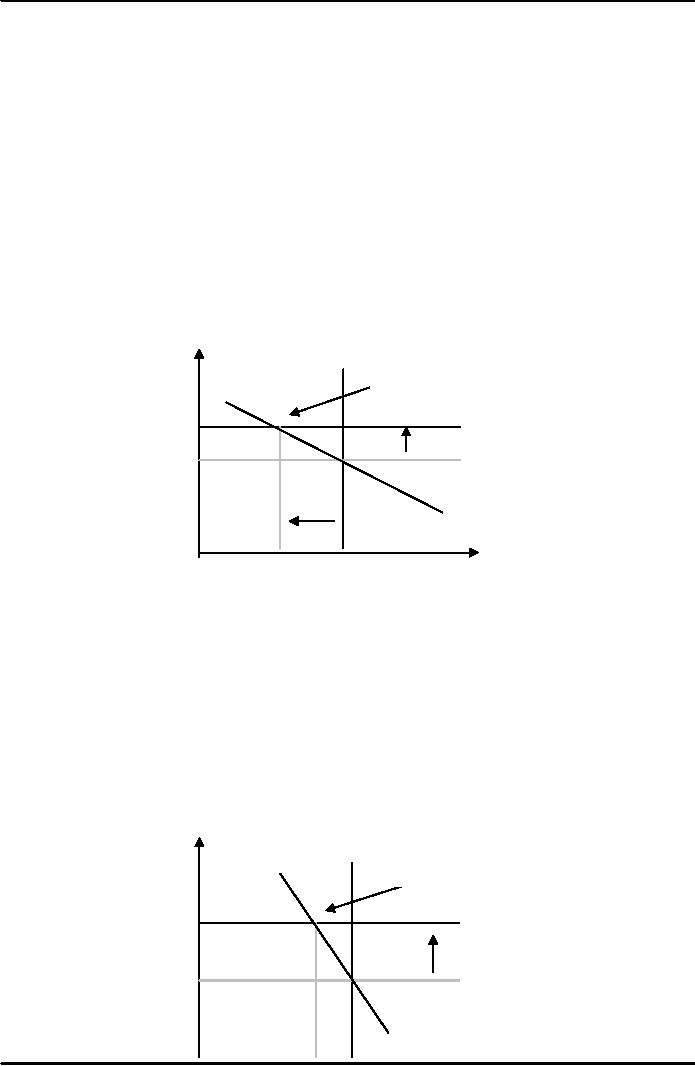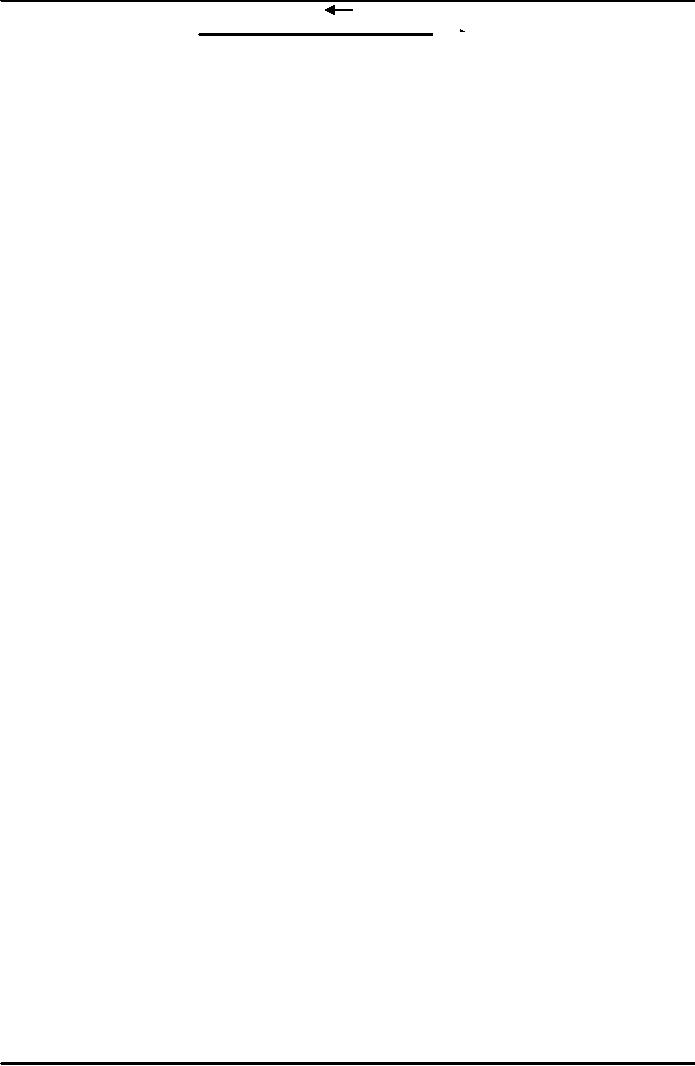 |
SHIFTS IN POTENTIAL OUTPUT AND REAL BUSINESS CYCLE THEORY |
| << EQUILIBRIUM AND THE DETERMINATION OF OUTPUT AND INFLATION |

Money
& Banking MGT411
VU
Lesson
45
SHIFTS
IN POTENTIAL OUTPUT AND REAL BUSINESS
CYCLE THEORY
Changes
in potential output shift the
long-run aggregate supply
curve
At
first the shift has no
impact on the short-run aggregate
supply curve, so inflation and
output
remain
stable
But
with time, the increase in
potential output will mean
that current output is now
below
potential
output, creating a recessionary
output gap, which puts
downward pressure on
inflation,
shifting
the short-run aggregate supply
curve downward
Figure:
The Effects of an increase in potential
Output on Inflation and
Output
An
increase in potential output
shifts the LRAS curve to
the right. In the short
run, current
output
remains unchanged. But since
current output is now below
potential output, the
resulting
recessionary
gap places downward pressure
on inflation and output eventually
begin to rise.
Inflation
(�)
Old
LRAS
New
LRAS
Target
SRAS
Inflation
(�T)
Short
run
equilibrium
is
AD
unchanged
Old
New
Output
(Y)
Potential
Potential
Output
Output
What
happens next depends on what
policymakers do; they
can:
Take
advantage of the downward pressure on
inflation to reduce their
inflation target
Initiate
actions that ensure that
inflation does not
fall.
In
either case, notice that the
higher level of potential
output means a lower
long-term real
interest
rate.
Business
cycle fluctuations can
therefore be explained in terms of
shifts in aggregate
demand
that
change its point of
intersection with a flat
short-run aggregate supply
curve
An
alternative explanation for
business cycle fluctuations
focuses on shifts in potential
output, a
view
called real business cycle
theory.
Real
business cycle
theory
Real
business cycle theory starts
with the assumption that prices
and wages are flexible, so
that
inflation
adjusts rapidly (the
short-run aggregate supply
curve shifts quickly in
response to
deviations
of current output from
potential output).
This
assumption implies that the short-run
aggregate supply curve is
irrelevant: equilibrium
output
and inflation are determined by the
point on the aggregate demand
curve where current
output
equals potential
output
Any
shift in the aggregate demand
curve, regardless of its
source, will change
inflation but not
output
143

Money
& Banking MGT411
VU
Real
business cycle theorists explain
recessions and booms by looking at
fluctuations in
potential
output, focusing on changes in
productivity and their
impact on GDP
The
Impact of a Shift in Aggregate Demand
and Aggregate Supply on Output
and Inflation
Increase
in Aggregate
Positive
Inflation
Increase
in Potential
Demand
Shock
Output
Consumer
Confidence up Labor Costs
up
Capital
in Production up
Source
Business
Optimism up Raw Material Prices up
Labor in Production up
Expected
Inflation up Productivity up
Govt.
Purchases up
Taxes
Down
Exchange
Rate
Depreciates
Short-Run
Y
Increases
Y
falls
Y
unchanged
�
Is
unchanged
�
rises
�
Unchanged
Effects
1.
Recessionary output gap
1.
Recessionary output
1.
Expansionary
Path
of
puts
downward pressure
gap
puts downward
output
gap puts
Adjustment
on
inflation
pressure
on inflation
upward
pressure on
2.
As
Inflation begins to
2.
As
Inflation begins
inflation
fall,
output begins to
to
fall, output begins
2.
As
Inflation begins
rise
to
rise
to
rise, output
begins
to fall
Y
= original potential
Y
= original potential Y = new
potential output
Long-Run
�
=
target (may change)
output
output
Effects
�
=
target (may change)
�
=
target (may
change)
Inflation
will rise
Inflation
will rise
Inflation
will fall
Effects
of
temporarily
unless the
temporarily
unless the temporarily unless
the
Monetary
central
bank changes its central
bank changes its central
bank changes its
Policy
inflation
target.
inflation
target.
inflation
target.
Stabilization
Policy
Monetary
Policy
Policymakers
can shift the aggregate
demand curve by shifting
their monetary policy
reaction
curve,
but they cannot shift the
short-run aggregate supply
curve
They
can neutralize movements in
aggregate demand, but they
cannot eliminate the effects of
an
inflation shock
Shifts
in Aggregate Demand
If
households and businesses become more
pessimistic, driving down aggregate
demand, the
economy
moves into a recession as the
new short-run equilibrium
point is at a current
output
less
than potential
output.
Policymakers
will conclude that the long-run
real interest rate has gone down and
will shift their
monetary
policy reaction curve to the
right, reducing the level of the
real interest rate at every
level
of inflation
This
shifts the aggregate demand
curve back to its initial
position
144

Money
& Banking MGT411
VU
Figure:
Stabilizing a shift in Aggregate
Demand
Following
a drop in consumer or business
confidence, ADC shifts to the
left. to stabilize the
economy,
the
central bank can ease
the policy, shifting the
monetary policy reaction
curve to the right.
This
reduces
the real interest rate at every level of
inflation and shifts the aggregate
demand curve back to
where
it started. Their action
leaves current output and
inflation unchanged.
In
the absence of a policy response,
output would fall; instead,
output remains steady along
with
inflation.
Policymakers
have neutralized the shift in aggregate
demand, keeping current
output equal to
potential
output and current inflation
equal to target
inflation.
Inflation
Shocks and the Policy
Tradeoff
For
policymakers, an inflation shock is an
entirely different
story.
A
positive inflation shock
drives down output and
drives up inflation.
Policymakers
can shift the monetary
policy reaction curve and so
shift the aggregate
demand
curve,
relying on the economy's natural
response to an output gap to bring
inflation back to
target
New
short run
Inflation
(�)
Equilibrium
New
SRAS
Target
Old
SRAS
Inflation
(�T)
Flat
ADC
Current
Potential
Output
(Y)
Output
Output
The
central bank can respond
aggressively to keep Current Inflation
near Target
But
this tool cannot be used to
bring the economy back to its original
long-run equilibrium
point,
because monetary policy can
shift the aggregate demand
curve but not the
short-run
aggregate
supply curve
However,
monetary policymakers can
choose the slope of their monetary
policy reaction curve
and
so affect the slope of the aggregate
demand curve, and in this
way monetary
policymakers
can
choose the extent to which
inflation shocks translate into
changes in output or changes
in
inflation
By
reacting aggressively to inflation
shocks, policymakers force
current inflation back to
target
quickly,
but at a cost of substantial decreases in
output
LRAS
Inflation
(�)
New
short run
equilibrium
New
SRAS
Target
Inflation
Old
SRAS
(�T)
Steep
AD
145

Money
& Banking MGT411
VU
Output
(Y)
Current
Potential
Output
Output
The
central bank can respond
cautiously to Minimize Deviations of
Current Output from
Potential
Output
When
choosing how aggressively to respond to
inflation shocks, central
bankers decide how to
conduct
stabilization policy; they
can stabilize output or
inflation, but not
both
Opportunities
Created by Increased
Productivity
When
productivity rises, potential
output increases. This
shifts the long-run aggregate
supply
curve
to the right, eventually creating a
recessionary gap, which exerts
downward pressure on
inflation.
This
gives policymakers the
opportunity to guide the economy to a
new, lower inflation
target
without
inducing a recession
Since
the increase in potential output
lowers the long-run real interest rate,
rather than reducing
their
inflation target, policymakers
can shift their monetary
policy reaction curve to the
right,
shifting
aggregate demand to the
right.
This
will increase current output
quickly, leaving inflation unchanged at
the target level
Fiscal
Policy
The
people who control the
government's tax and expenditure
policies can stabilize
output and
inflation
too.
Fiscal
policy can be used just
like monetary policy to
neutralize shocks to aggregate
demand
and
stabilize output and
inflation.
Fiscal
policy has two defects: it
works slowly and it is almost impossible
to implement
effectively
Most
recessions are short, data is
available only with a lag,
and it takes time for
Congress to
pass
legislation.
Economics
collides with politics where
fiscal stimulus is concerned as
politicians design
stimulus
packages based more on political
calculation than economic
logic.
Under
most circumstances, then,
stabilization policy should be
left to the central bankers;
fiscal
policy
does have a role but only
after monetary policy has
run its course
♣♣♣♣♣♣♣♣♣♣♣♣♣♣♣♣♣♣♣♣♣♣♣♣♣♣♣♣♣♣♣♣♣♣♣♣♣♣♣♣♣
146
Table of Contents:
- TEXT AND REFERENCE MATERIAL & FIVE PARTS OF THE FINANCIAL SYSTEM
- FIVE CORE PRINCIPLES OF MONEY AND BANKING:Time has Value
- MONEY & THE PAYMENT SYSTEM:Distinctions among Money, Wealth, and Income
- OTHER FORMS OF PAYMENTS:Electronic Funds Transfer, E-money
- FINANCIAL INTERMEDIARIES:Indirect Finance, Financial and Economic Development
- FINANCIAL INSTRUMENTS & FINANCIAL MARKETS:Primarily Stores of Value
- FINANCIAL INSTITUTIONS:The structure of the financial industry
- TIME VALUE OF MONEY:Future Value, Present Value
- APPLICATION OF PRESENT VALUE CONCEPTS:Compound Annual Rates
- BOND PRICING & RISK:Valuing the Principal Payment, Risk
- MEASURING RISK:Variance, Standard Deviation, Value at Risk, Risk Aversion
- EVALUATING RISK:Deciding if a risk is worth taking, Sources of Risk
- BONDS & BONDS PRICING:Zero-Coupon Bonds, Fixed Payment Loans
- YIELD TO MATURIRY:Current Yield, Holding Period Returns
- SHIFTS IN EQUILIBRIUM IN THE BOND MARKET & RISK
- BONDS & SOURCES OF BOND RISK:Inflation Risk, Bond Ratings
- TAX EFFECT & TERM STRUCTURE OF INTEREST RATE:Expectations Hypothesis
- THE LIQUIDITY PREMIUM THEORY:Essential Characteristics of Common Stock
- VALUING STOCKS:Fundamental Value and the Dividend-Discount Model
- RISK AND VALUE OF STOCKS:The Theory of Efficient Markets
- ROLE OF FINANCIAL INTERMEDIARIES:Pooling Savings
- ROLE OF FINANCIAL INTERMEDIARIES (CONTINUED):Providing Liquidity
- BANKING:The Balance Sheet of Commercial Banks, Assets: Uses of Funds
- BALANCE SHEET OF COMMERCIAL BANKS:Bank Capital and Profitability
- BANK RISK:Liquidity Risk, Credit Risk, Interest-Rate Risk
- INTEREST RATE RISK:Trading Risk, Other Risks, The Globalization of Banking
- NON- DEPOSITORY INSTITUTIONS:Insurance Companies, Securities Firms
- SECURITIES FIRMS (Continued):Finance Companies, Banking Crisis
- THE GOVERNMENT SAFETY NET:Supervision and Examination
- THE GOVERNMENT'S BANK:The Bankers' Bank, Low, Stable Inflation
- LOW, STABLE INFLATION:High, Stable Real Growth
- MEETING THE CHALLENGE: CREATING A SUCCESSFUL CENTRAL BANK
- THE MONETARY BASE:Changing the Size and Composition of the Balance Sheet
- DEPOSIT CREATION IN A SINGLE BANK:Types of Reserves
- MONEY MULTIPLIER:The Quantity of Money (M) Depends on
- TARGET FEDERAL FUNDS RATE AND OPEN MARKET OPERATION
- WHY DO WE CARE ABOUT MONETARY AGGREGATES?The Facts about Velocity
- THE FACTS ABOUT VELOCITY:Money Growth + Velocity Growth = Inflation + Real Growth
- THE PORTFOLIO DEMAND FOR MONEY:Output and Inflation in the Long Run
- MONEY GROWTH, INFLATION, AND AGGREGATE DEMAND
- DERIVING THE MONETARY POLICY REACTION CURVE
- THE AGGREGATE DEMAND CURVE:Shifting the Aggregate Demand Curve
- THE AGGREGATE SUPPLY CURVE:Inflation Shocks
- EQUILIBRIUM AND THE DETERMINATION OF OUTPUT AND INFLATION
- SHIFTS IN POTENTIAL OUTPUT AND REAL BUSINESS CYCLE THEORY